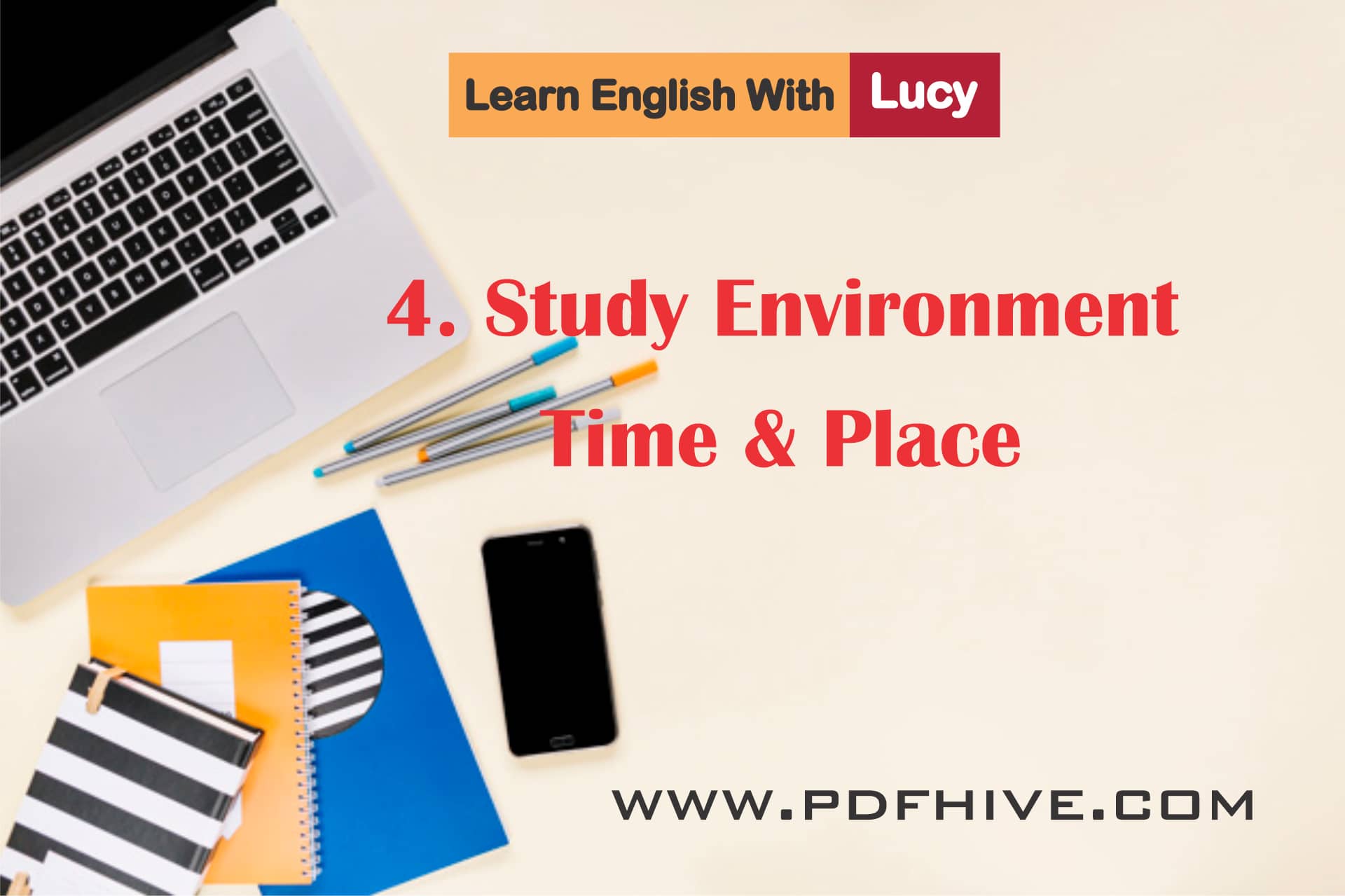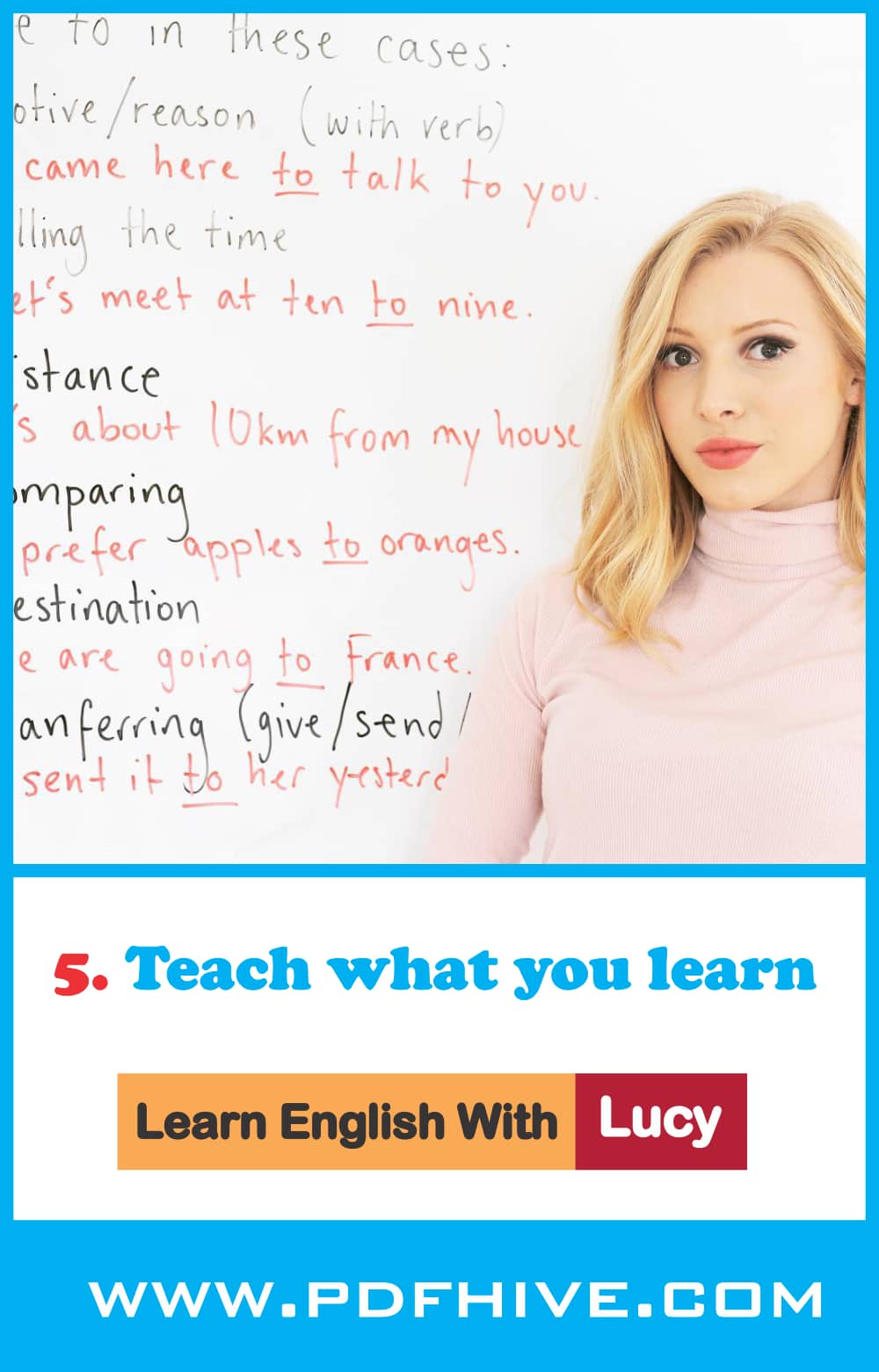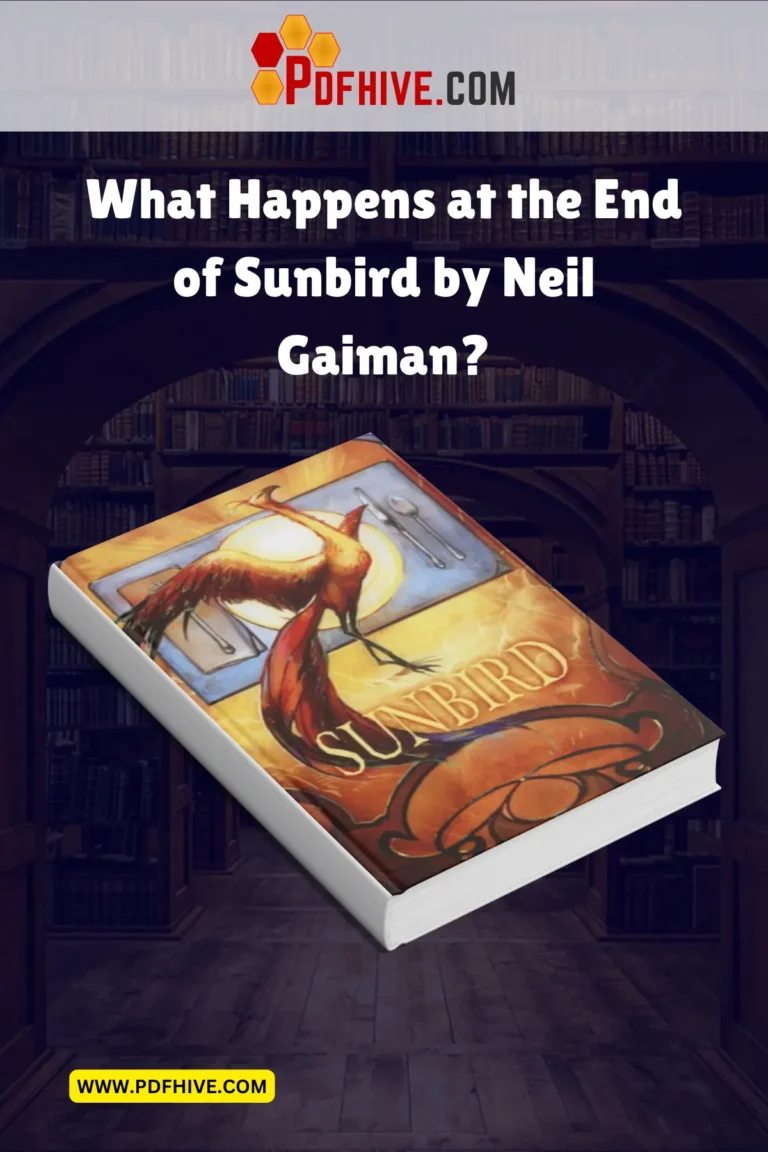Study SMART not HARD | Learn English with Lucy
Study SMART not HARD | Learn English with Lucy: Hello everyone and welcome to English with Lucy. In today’s article I’m going to teach you how to study smarter, not harder. Many students think that if they study more and if they study harder then they will become better at English speaker or whatever they are studying. This is not true! Even our teachers will tell us to study for longer, to study more, and to study harder. It doesn’t necessarily work.
The best students that I have had are those that study in a smart, intelligent way and use specific study methods that I will teach you, rather than those that just study for ages and nothing really goes in.

FIVE study methods | Learn English with Lucy
So I’ve got five study methods. And I’m going to show you how you can study for less time and learn more.
- Your personal concentration
- Always study in chunks
- The SQRRR method
- Create a study time and place
- Teach what you learn
Here is the best video that is explaining these five study methods from English with Lucy!
1. Your personal concentration | English with Lucy
Let’s get started with number one from Study SMART not HARD tips. The first one is find out how long your personal concentration lasts. Everyone recommends studying for 10 minutes a day, 20 minutes a day, 30 minutes a day, one hour a day and taking study breaks of seven minutes or whatever. But that doesn’t apply to everyone, everyone is absolutely different.

Language learning is not a once size fits all and nor is any other type of learning for that matter. You need to time your concentration, and this is going to take a little bit of effort, but it will be so worth it when you find out how long it lasts.
All you need is a stopwatch, most people have one on their phones. And for your next couple of study sessions I want you to take that stopwatch and start it when you start to study. Then stop the timer when you lose concentration. Do this a couple of times and generate an average time.
If your concentration time is really inconsistent, try it a number of times over a period of a couple of days. Try just after lunchtime, just before breakfast, to see if that changes at all. And just try to get a consistent average, so you know your minimum concentration time.
2. Study in CHUNKS | English with Lucy
Now this brings me onto point two, which is study in chunks. You need to avoid long study sessions. It sounds mad, doesn’t it? Because you think you should be studying for hours on end. But no, avoid long study sessions. And just study for your calculated concentration time. And between those chunks of studying take short breaks. You can work out how much you need through experience.

Start with five minutes, and if your concentration time decreases, in the next study chunk, well you’ll need to increase your break time. Over time you will work out your perfect medium. But how can you find suitable topics and lessons to fill your exact concentration time? How can you possibly work out how long a topic will take?
BUSUU is the perfect solution. They are an online study platform with over 1000 lessons created by expert linguists. You can learn English and 11 other languages, ranging from the levels A1 to B2 that covers quite a lot of you. This is the part that will interest many of you because so many of you ask me how you can find out your English level. Busuu offers a really comprehensive free level placement test. You can test yourself right now for free by clicking on the link in the description box and signing up. It’s a really good test and I did it myself and I got a very high score, thank God! Share your test results in the comments section.
Now let’s get back to chunking, how can Busuu help? Well, each lesson has a time indicator so you can work out how many individual lessons you can fit perfectly into your concentration time. Alternatively, Busuu can help you devise a study plan and they’ll help you define goals.
3. SQRRR method | English with Lucy
Right, let’s move on to point number three, another method. It is the SQRRR method. Or it’s also called the SQ3R as well. This method was originally introduced in 1946 by American educational philosopher, Francis P. Robinson. It’s named after its five steps. Survey, question, read, recite, review. Now this method is designed to offer a more efficient approach to reading textbooks. In your case this might be grammar textbooks, or it can be applied to any other subject. You don’t want to spend ages reading every single word in a grammar book. Not everything is going to be relevant to you and you are just going to be wasting your time.

You need to be filling in the gaps in your knowledge. You don’t need to repeat what you already know. I think reading an educational text from start to finish is one of the biggest time wasters, ever! Okay, well, I can think of other time wasters as well. But seriously, if you already know something really, really well, why waste your time going over it again?
Let’s break down these steps and see how the method works.
a) Survey: Let’s break down these steps and see how the method works. So the first one, survey, also sometimes called skim. You need to resist the temptation to go through an entire book or an entire chapter. Instead, go through a chapter and note down the important information. The chapter headings, the subheadings, other outstanding features, this normally takes only a few minutes.
b) Questions: Next is Q, which stands for questions. You need to generate questions about the contents of the chapter or book, if it’s a small book. This will help you identify what you don’t know and help you avoid what you already know. Questions like: what is the passive voice? Are there any exceptions to this rule?
c) Read: The next one is read. You need to go back and look for the answers to your own generated questions. This is called active reading. This will help you to avoid passive reading, which is just reading without engaging in the study material.
d) Recite, or remember: The next one is recite, or remember. Try to retrieve from memory and recite what you’ve just learnt as if you are telling it to someone else, and you need to use your own words, that’s very important.
e) Recite, or remember: And the last one is review. Once you’ve reached the end of the passage, review the material by repeating back to yourself what the point of the passage was using in your own words.
I really recommend looking further into this method because I think it can really, really help you, not only with English, with lots of other subject as well. Especially if you’re studying for a university degree, because they make us buy so many books and then we only need a couple of lines of information from each, I remember that being so frustrating. I really could’ve used that SQRRR method.
4. Study Environment | English with Lucy
Right, number four is to create a study time and place. You need to create an environment for yourself. The amount of people that I see sitting in a noisy library or a noisy cafe trying to study, they just get distracted. I remember studying sort of being a social interaction as well, and I didn’t get much done. You need to create an area which is free of distraction and is also relaxing, so that you can make the most of your concentration times and nobody is going to annoy you or distract you during those periods. If you can’t make this sort of environment in your own home, maybe you have young siblings or you’ve got limited space, try somewhere outside.

Now this is weather dependent, but I find that studying in nature is really, really amazing. You also do need to set study times. Now I don’t mean doing a color-coded study plan, although that works for many people. But based on your concentration times, try to set out some sort of study plan.
Now if you’re studying for an exam that would probably be a lot more intensive. And if you’re just studying to improve generally, then maybe it’s once a week or daily. We’re really lucky nowadays because we have noise-canceling headphones, so you could sort of create a distraction-free place to study anywhere. As long as you’re not visually distracted. Maybe you can study on your commute.
I always advise listening to music without words or listening to other sorts of white noise. Something that I found really, really useful when I was studying was a band called the Vitamin String Quartet. They do violin quartet covers of popular songs. Popular songs? God, I sound so old-fashioned! No, it’s really, really good. I remember I used to listen to Coldplay and the Kings of Leon, but only on a violin. And it was great because you can’t really sing along and the words don’t distract you, but you’re still listening to music that you enjoy. And they’re also very talented musicians. I will link below to the Vitamin String Quartet as well.
5. Teach what you learn | English with Lucy
Now the last point, number five. It’s one of my favourites. It really is how I learnt English grammar. Because I was never taught it at school. It is teach what you learn. I was really, really bad at grammar and it is only when I started teaching at the age of 19 that I started to understand it more. So my first couple of lessons really were quite shaky. But then the more I taught the information and the more questions I received from people and the more I thought about and processed the information, the more I understood it. Now I can offer grammar explanations like that.

So, is there anyone around you with the same goal as you? Can you take turns teaching each other? This works with English, it works with any other subject. Work to the other person’s concentration time, have a little whiteboard, do a little session, times up, have a break, swap.
Both of you benefit from it because you’re learning, because you’re being taught, and you also learn because you are teaching.
By thinking as both a student and a teacher you are looking at information from both perspectives. So it can be amazing for your brain. When I look at grammar now I think, how can I make this easier for my students to understand? And subconsciously I am also making that grammar easier for me to understand.
Conclusion
So, these are my five tips about “Study SMART not HARD“. You now know what you need to do. You need to time your next few study sessions. And then you need to study in chunks. If you are learning a language, try Busuu because they tell you exactly how long each lesson is, and you can also find a nice speaking partner to practice with.
Sign up BUSUU, don’t forget about that level placement test, find out if you’re an A1, B2. Is anyone a C1? I would be very, very impressed if we had C1s and C2s here. If you’ve got long texts to read, try the SQRRR method. And definitely do some more research into it if you are interested in that, because it really can be so beneficial. And then you need to create a study time and a study place. And teach your friends, and hopefully be taught by your friends as well. Right, that is it for today’s lesson.
I hope you enjoyed it, I hope you learnt something. Don’t forget to connect with me on all of my social media. I’ve got my Facebook, my Instagram, my Twitter and YouTube channel. And I will see you soon for another lesson. Take care, Good bye!







[…] these are my five tips about “Study SMART not HARD“. You now know what you need to do. You need to time your next few study sessions. And then […]
[…] Study SMART not HARD | Learn English With Lucy […]
learnt English in daily life environments.